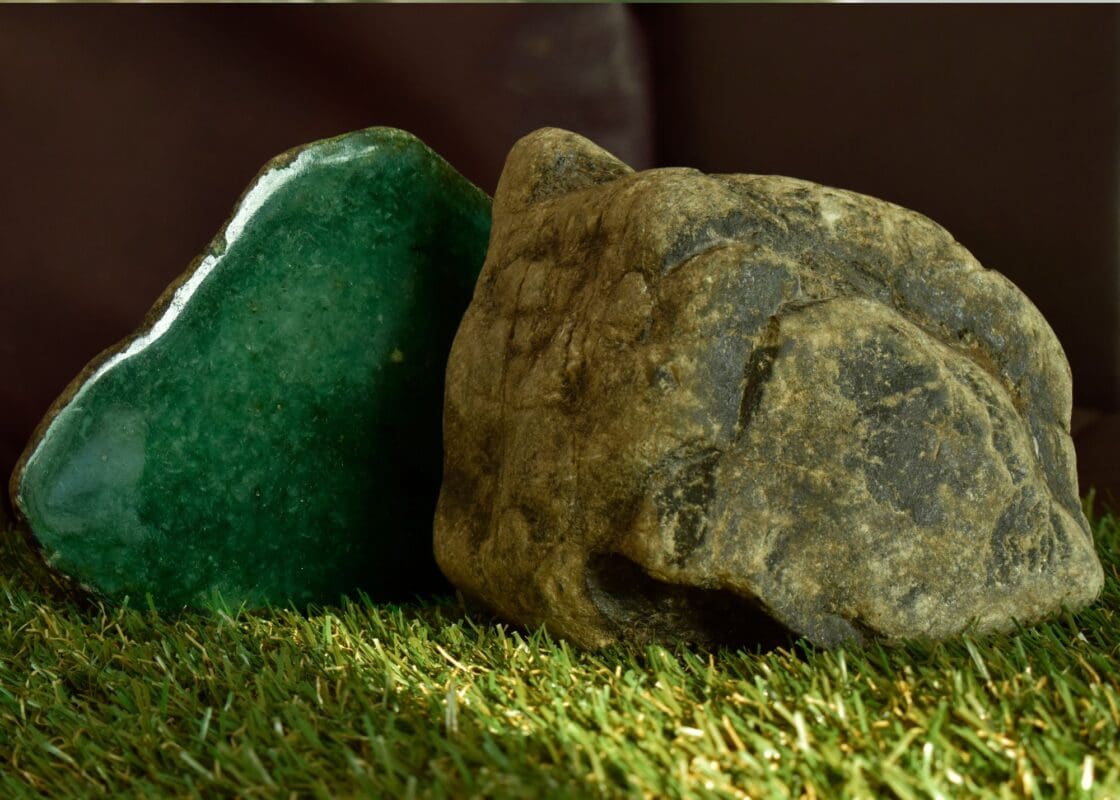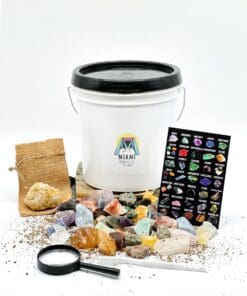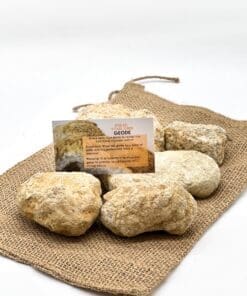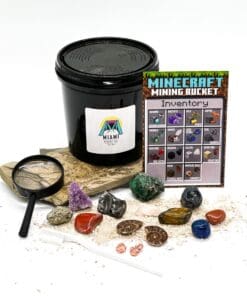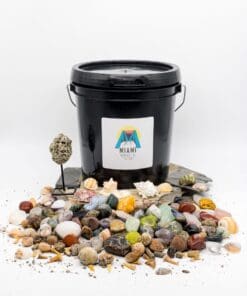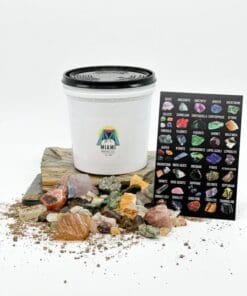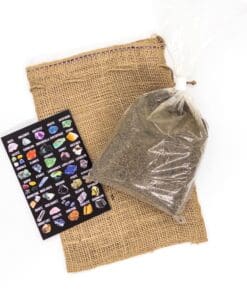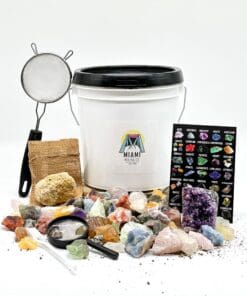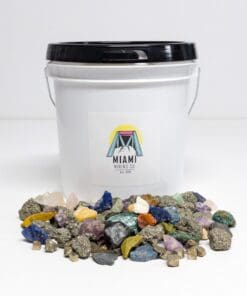Delaware Gem Mining Guide: Unearth Hidden Treasures Near You!
The state of Delaware might be small in size, but it packs a punch when it comes to hidden treasures beneath its surface. Gem mining in Delaware has been an alluring pastime for locals and visitors alike, with the chance to find sparkling jewels and fascinating minerals. In this guide, we will walk you through the most prized gemstones found in Delaware, the top locations to dig for them, and much more.
The Most Popular Gemstones in Delaware
Delaware may be tiny in geographical spread, but it is replete with mineralogical wonders. While the state isn’t home to dazzling sapphires or rubies, it boasts a variety of intriguing and aesthetically pleasing gemstones. Below, we’ve broken down some of these treasures into two categories: rare and common, to give you a glimpse of what the First State has to offer.
Rare Gemstones Found in Delaware:

| Gemstone | Description |
|---|---|
| Delaware Jade | A unique form of jade found in Delaware, often greenish in color and valued for its appearance and textural quality. |
| Wilmingtonite | A rare mineral specific to the state, known for its deep blue hue. |
| Serpentine | Often found in the northern part of the state, it has a smooth texture and is usually green, sometimes translucent. |
| Staurolite | Occasionally discovered in Delaware, it is recognized for its cross-like crystal twins. |
| Chrysocolla | A green-blue mineral, it’s sometimes found in the copper deposits of the state and is often mistaken for turquoise. |
Common Gemstones Found in Delaware:

| Gemstone | Description |
|---|---|
| Chalcedony | A form of quartz, chalcedony can be found in a variety of colors from blue to pink and is quite prevalent in Delaware. |
| Jasper | A form of chalcedony that’s opaque, it is often red, yellow, or brown and is commonly discovered near riverbeds. |
| Quartz | This versatile gemstone ranges from clear to milky or even slightly pinkish in hue and is quite common in the state. |
| Agate | A translucent variety of chalcedony with bands of colors; often found near the C&D Canal area. |
| Muscovite | A silvery mica commonly found in the state, often in sheet-like structures. |
| Petrified Wood | Ancient plant material that has been fossilized over time, it’s found especially in the coastal plain region. |
| Garnet | Although not in gem-quality abundance, garnet grains can sometimes be found in the state, recognized by their red hue. |
| Hematite | This iron oxide mineral has a metallic gray appearance and can sometimes be found in small quantities in Delaware. |
| Pyrite | Known as “Fool’s Gold” due to its golden metallic luster, it’s occasionally found in the state. |
| Calcite | This common carbonate mineral is often clear or white and can be discovered in various parts of Delaware. |
Whether you’re keen on finding a rare Wilmingtonite or just wish to come across the more common, yet beautiful chalcedony or jasper, Delaware’s terrains offer ample opportunities for gem enthusiasts.
Top Gem Mining Locations in Delaware
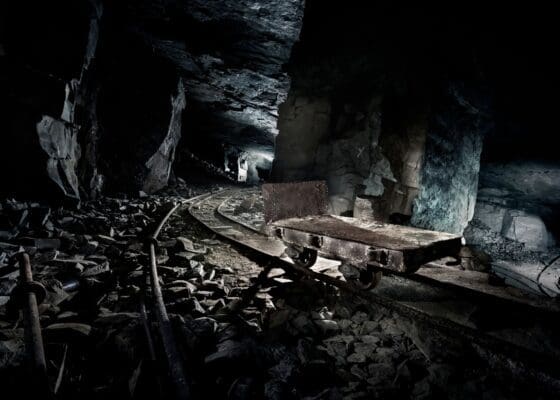
- C&D Canal Area: Located between the cities of Newark and Delaware City, the C&D Canal is not just an engineering marvel but a haven for mineral collectors. Notable finds include agates, jasper, and chalcedony. The public regions along the canal are freely accessible during daylight hours. No fees are required, but always respect private lands and boundaries.
- Indian River: Near the towns of Millsboro and Dagsboro, the Indian River is an excellent location for prospecting petrified wood, especially post-rainfall. The riverbanks are generally open for exploration, but specific areas might require permissions. It’s open from sunrise to sunset, with no associated fees.
- Brandywine Creek: This site, close to Wilmington, is famous for its deposits of serpentine and chrysocolla. The best spots are around the riverbed, accessible most of the year. Operating hours are from dawn to dusk, and while there’s no fee for gem hunting, parking might have a small charge.
- Red Clay Creek: Situated in northern Delaware, near the Pennsylvania border, this creek is known for small quartz crystals and garnets. It’s accessible throughout the year, from sunrise to sunset. No fees apply, but ensure you’re not on private property.
- Delaware Seashore State Park: Located along the Atlantic coast, this site doesn’t necessarily offer traditional gems but instead a range of fascinating marine fossils. Open from 8 AM to sunset, there’s a nominal entrance fee for vehicles during the peak season.
- Sussex County Fields: The open fields of Sussex County, especially after tilling season, reveal quartz and occasionally garnet. Always seek permission from landowners before exploring. Accessibility and fees vary depending on the specific location and owner’s discretion.
- Prime Hook National Wildlife Refuge: Near Milton, this location offers both a serene environment and the chance to discover petrified wood. Open from half an hour before sunrise to half an hour after sunset, there’s no fee, but collecting regulations should be strictly followed.
- White Clay Creek: Close to Newark, this creek is another hotspot for quartz enthusiasts. It’s accessible year-round, from sunrise to sunset. While gem hunting is free, there might be parking fees depending on your chosen access point.
- Trap Pond State Park: Located near Laurel, while it’s more popular for its bald cypress trees, the surrounding areas can yield chalcedony. The park opens at 8 AM and closes at sunset. There’s a small entrance fee for vehicles.
- Broadkill Beach: A surprise addition, but the sands here occasionally reveal fossilized sharks’ teeth, especially after storms. Accessible throughout the year, there are no specific fees, but local parking rules apply.
While each location offers its unique charm and potential finds, always remember to respect the environment, adhere to any rules or restrictions, and leave the place as pristine as you found it.
History of Gem Mining in Delaware
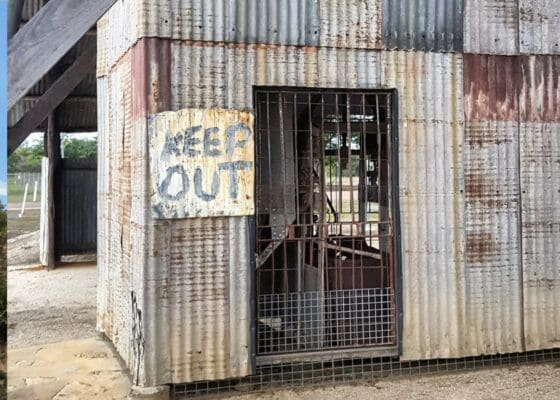
Delaware, often overshadowed by its larger neighbors, holds a rich tapestry of geological history when it comes to gem mining. It’s a tale that spans centuries, influenced by various eras and communities that have inhabited or traversed its lands.
Historically, Native American communities were the first to recognize and harness the potential of Delaware’s mineral wealth. For them, the gemstones were not just sparkling trinkets; they held profound spiritual, cultural, and utilitarian significance. Chalcedony and jasper, common finds in the state, were carefully fashioned into tools, weapons, and adornments. These items weren’t just for daily use but were integral to their trade systems, often exchanged with neighboring tribes.
With European colonization in the 17th century, Delaware’s mineral resources were once again thrust into the limelight. While the newcomers were initially more focused on agriculture and trade, it wasn’t long before the potential of Delaware’s mineral riches was realized. The 18th and 19th centuries saw small-scale mining activities, with local communities prospecting for gems not just for adornment but for their perceived medicinal and mystical properties.
The 20th century brought a more recreational approach to gem mining in Delaware. As the state underwent urbanization and industrialization, the pockets of untouched land became prized sites for hobbyists and gem enthusiasts. The joy lay not in commercial exploitation but in the thrill of discovery. Events like the gold rush in the western states never transpired here. Instead, Delaware remained a quiet haven for casual prospectors, with its riverbeds, fields, and coastal regions offering hidden treasures.
In recent years, the state has seen a resurgence in interest in its geological history. Schools, colleges, and local communities often organize field trips and excursions, emphasizing the educational and recreational value of gem hunting.
In essence, Delaware’s gem mining history is not one of vast riches and grandeur. It’s a more subtle, yet equally compelling tale of discovery, connection to the land, and the enduring human fascination with the treasures beneath our feet.
Gem Mining Regulations in Delaware

Gem mining in Delaware, like in many other states, is governed by a set of regulations to ensure that the environment is protected, individual rights are respected, and the historical significance of certain areas is preserved. Understanding these rules is crucial for anyone keen on exploring Delaware’s mineral wealth.
1. Land Ownership and Rights: In Delaware, the right to mineral resources belongs to the landowner. This means that, even if a particular site is known for its gem deposits, you cannot collect there without express permission from the owner. This holds true for both private and commercial properties. Before embarking on any gem hunting excursion, it’s essential to determine land ownership and obtain the necessary permissions.
2. Public Lands and State Parks: While many state parks, wildlife refuges, and public lands in Delaware allow gem hunting, there are usually stipulations on how and where you can collect. For example, some areas may be off-limits due to their ecological or historical significance. Where gem hunting is permitted, there might be restrictions on the volume of gemstones you can collect, the tools you can use, or the methods of extraction.
3. Environmental Considerations: Delaware places a high emphasis on environmental conservation. Even if gem hunting is allowed in an area, you are often required to ensure minimal disruption to the environment. This might mean refilling any holes you dig, not using chemicals that could contaminate water sources, and generally leaving the area as you found it.
4. Historical and Cultural Sites: Delaware is home to numerous historical and cultural sites. Gem hunting in these areas, even if gems are known to be present, is usually prohibited to protect the state’s rich heritage. Disturbing such sites can lead to hefty fines and legal repercussions.
5. Reporting Large Finds: While Delaware encourages recreational gem hunting, any significant or unusual finds must often be reported to the state’s Department of Natural Resources and Environmental Control. This is to document and possibly study the find, ensuring that any scientific or historical significance is not overlooked.
6. Commercial Prospecting: For those interested in commercial gem mining, a different set of regulations comes into play. Licenses, extensive environmental impact assessments, and periodic reviews are part of the process. The state takes a measured approach, balancing economic interests with environmental and societal considerations.
In summary, while Delaware offers a plethora of opportunities for gem enthusiasts, it is paramount to respect its regulations. These rules are in place to protect the state’s natural, historical, and cultural assets, ensuring they can be enjoyed by generations to come. Before heading out with your tools and equipment, always familiarize yourself with the latest regulations and best practices.
Necessary Tools and Equipment for Gem Mining in Delaware
Equipping yourself with the right tools can make the difference between a fruitful gem hunting experience and a frustrating day out. The geology of Delaware, with its riverbeds, open fields, and coastal regions, dictates the tools and equipment necessary for efficient and effective gem mining.
1. Screening and Classifying Tools: Reveal those hidden treasures!
Description: Given that many of Delaware’s gemstones are found near riverbeds and streams, a set of sifting screens is invaluable. These screens help separate larger rocks and debris from potential gemstones. It’s wise to have screens of different mesh sizes for better filtering.

🛒 Explore Top Screening Sets on Amazon
2. Shovels and Trowels: Digging deep or just scratching the surface?
Description: Digging tools, ranging from full-sized shovels to handheld trowels, come in handy especially if you’re venturing into fields or lightly forested areas where gems might be found just below the surface.

🛒 Find Quality Shovels and Trowels on Amazon
3. Picks and Hammers: The backbone of any gem hunting endeavor.
Description: A rock hammer, with its flat and pointed ends, is invaluable for breaking apart rock formations and exposing hidden gems. A pick can assist in harder terrains, helping to dislodge rocks or create an entry point.

🛒 Check Out Best Picks and Hammers on Amazon
4. Buckets: Your trusted companion for carrying treasures.
Description: Once you’ve started collecting, you’ll need something to store your finds. A durable bucket can be used to hold larger rocks and minerals, while smaller containers or cloth bags are perfect for delicate or smaller gemstones.

🛒 Shop for Reliable Buckets on Amazon
5. Magnifying Glass: Every detail counts!
Description: Some gems or minerals can be quite small or require closer examination to determine their value. A good magnifying glass or jeweler’s loupe provides this clarity.

🛒 Grab Your Magnifying Glass on Amazon
6. Guidebooks and Field Guides: Knowledge at your fingertips.
Description: Especially for beginners, having a pocket-sized guidebook to gemstones common in Delaware can be immensely helpful. These guides offer visual references and descriptions, aiding in the identification of your finds.

🛒 Discover the Best Field Guides on Amazon
7. Containers and Bags: Organize, store, and flaunt your finds.
Description: As you gather gemstones, having durable bags or buckets ensures safe storage. Labeling them based on location or type of stone can be helpful for post-trip analysis.

🛒 Shop for Storage Solutions on Amazon
8. First Aid Kit: Better safe than sorry!
Description: Given the outdoor nature of gem hunting, minor injuries like cuts or scrapes are possible. A basic first aid kit equipped with antiseptics, bandages, and other essential items should be part of your gear.

🛒 Secure Your First Aid Kit on Amazon
In essence, while the allure of discovering gemstones is thrilling, being well-prepared maximizes your chances of success. Investing in the right tools and equipment, and ensuring your safety, will enhance your gem mining experience in Delaware.
Tips and Tricks for Successful Gem Mining in Delaware

Delaware, while not as renowned as some western states in gem abundance, offers unique gem hunting opportunities for those in the know. Being well-prepared and knowledgeable about the land can greatly enhance the success of your outing. Here are some invaluable tips and tricks tailored to gem mining in the First State:
1. Timing is Everything: The best times to scour riverbeds and streams in Delaware are post-rainfall when the waters have unearthed new mineral deposits. Conversely, after heavy storms, coastal areas like Broadkill Beach can reveal hidden treasures washed ashore.
2. Local Knowledge: Engaging with local communities or joining a local mineral club can be invaluable. Members often have years, if not decades, of experience and can provide insights into lesser-known spots or techniques specific to the area.
3. Beware of Tides: If you’re searching along Delaware’s coast or tidal riverbanks, always be aware of tidal schedules. Not only will this give you the best chances when sands and soils are shifted, but it’s also a safety consideration.
4. Respect the Land: Always fill in any holes you dig and ensure you don’t disturb local ecosystems. Delawareans take pride in their natural beauty, and maintaining this respect ensures that gem hunting remains a welcome activity.
5. Stay Patient and Persistent: Gem hunting is as much about patience as it is about luck. Sometimes, spending hours might yield nothing, but the thrill lies in that one exciting find.
6. Use the Right Techniques: Depending on the location, different techniques can be employed. For riverbeds, the “wet sieving” method — submerging a filled sieve in water and shaking it to help reveal hidden gems — can be effective.
7. Keep Hydrated and Nourished: Delaware can get quite warm during summer months. Always carry enough water and snacks to keep you energized during your hunt.
8. Document Your Journey: Take photos or notes of the places you explore. Not only will this help you remember successful spots, but it also serves as a beautiful chronicle of your adventures.
9. Educate Yourself: Prior knowledge about Delaware’s common gemstones can greatly increase your chances of identifying them when you come across a potential find.
10. Safety First: Always let someone know where you’re going and, if possible, gem hunt with a buddy. Some terrains can be treacherous, and it’s always safer with company.
In conclusion, while gem hunting in Delaware may not guarantee daily jackpot finds, the joy of the hunt combined with the serene beauty of the state makes every trip worthwhile. With the right approach, a bit of local wisdom, and a dash of luck, Delaware might just reveal its sparkling secrets to you.
Handling Your Gemstone Finds
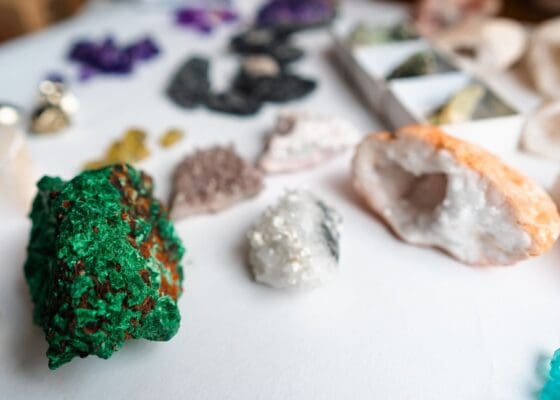
Unearthing a gemstone in Delaware, whether a gleaming quartz or a vibrant jasper, is undeniably thrilling. But once you’ve made your discoveries, how should you handle, clean, and care for these treasures? Here are essential steps and considerations to ensure your gems retain their natural beauty and value:
1. Initial Cleaning: After extraction, many gemstones are covered in dirt or clay. Using a soft brush and water, gently clean off any loose debris. Avoid using chemicals or abrasive materials, as these can damage the gem.
2. Identification: Before taking any further steps, it’s vital to identify your gemstone. Some gems require specific care or are sensitive to certain environments. A guidebook or consultation with a gemologist can assist in accurate identification.
3. Proper Storage: Store each gem separately to avoid scratches or damage. Soft pouches, cotton-filled boxes, or individual compartments in a display case work best. Keep them in a cool, dry place away from direct sunlight, as prolonged exposure can fade some gemstones.
4. Deep Cleaning: For gems with persistent dirt or encrustations, soaking them in water for a few hours can help. Some gems can be cleaned with mild dish soap, but always ensure that the soap is thoroughly rinsed off. Remember, gems like opals or pearls are porous and shouldn’t be soaked for extended periods.
5. Displaying Your Gems: If showcasing your finds, ensure the display case protects against dust and excessive light. UV protective cases are available for particularly sensitive gems.
6. Handling Precautions: Always handle gems with clean hands or use soft gloves. Natural oils or lotions from hands can affect some gem surfaces over time.
7. Valuation: If you believe you’ve found something of significant value, consider getting it appraised. Certified gemologists can offer insights into the gem’s quality, origin, and market value.
8. Potential Enhancement: Some gems benefit from professional cutting or polishing. If considering this, consult with professionals who have experience with the specific gem type.
9. Learning More: Investing time in learning about your finds— their geological formation, historical significance, and uses— can enrich your gem hunting journey. It offers context to each discovery and can be a rewarding pursuit in itself.
10. Share and Celebrate: Gem hunting in Delaware is as much about the community as it is about individual finds. Sharing your discoveries with friends, family, or local mineral clubs can amplify the joy of the hunt.
In essence, the journey doesn’t end when you unearth a gemstone; it’s only the beginning. Proper care, appreciation, and sharing of your Delaware gem finds ensures they’re cherished for years to come.
Famous Gemstone Finds in Delaware
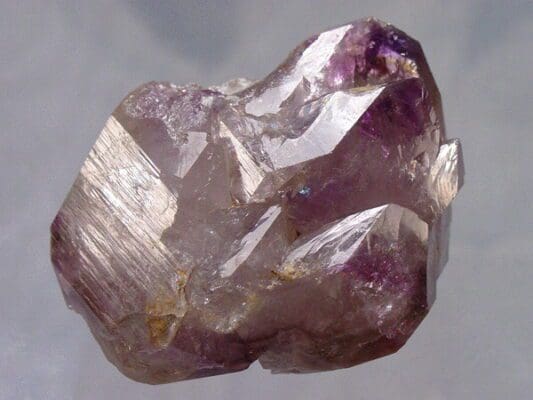
Delaware may not be the first state to spring to mind when one thinks of significant gemstone discoveries, but this modest-sized state has had its moments in the limelight with some captivating finds. These discoveries, while maybe not as voluminous as in some western states, have their unique allure and stories.
1. The Delaware Diamonds: In the early 19th century, clear quartz crystals, mistaken as diamonds due to their clarity and brilliance, were discovered in the northern parts of the state. While not true diamonds, their exceptional quality made them collectible in their own right.
2. The Brandywine Springs Tourmaline: A remarkable green tourmaline specimen was found near Brandywine Springs in the 1840s. This find brought gem enthusiasts to the region, showcasing Delaware’s potential in yielding fine-quality gemstones.
3. Slaughter Beach’s Sodalite: Slaughter Beach, known primarily for its horseshoe crabs, once saw the discovery of vibrant blue sodalite pebbles. These pebbles, found amidst common beach stones, added a splash of unexpected color to the state’s gem portfolio.
4. The Dover Opal: In a serendipitous discovery near Dover, a farmer stumbled upon a piece of opal with play-of-color characteristics. Although not of significant size, it demonstrated the state’s diversity in its mineral treasures.
5. Wilmington’s Beryl Cache: Near Wilmington, several sizable beryl specimens, with a striking blue-green hue, were discovered in the late 1800s. These specimens, now in private collections, are considered some of Delaware’s most prestigious gem finds.
6. New Castle County Garnets: The region has seen sporadic discoveries of almandine garnets. A particularly large specimen found in the 20th century is now on display in a local museum, testament to its significance.
7. The Sussex Amethyst: A rare find in the 1930s, a pristine amethyst crystal cluster was discovered in Sussex County, sparking brief excitement among local gem hunters.
While Delaware might not consistently make headlines with monumental gemstone discoveries, its rich geological history ensures that surprises are always possible. Each of these finds, whether in a riverbed, field, or beach, speaks to the state’s understated but undeniable gem potential. These famous finds serve as an inspiration for both seasoned gem hunters and novices, proving that treasure can be found where you least expect it.
Additional Gem Mining Opportunities
Beyond the borders of Delaware, gem hunting enthusiasts will be delighted to find that neighboring states also offer rich opportunities to uncover sparkling treasures. Here’s a glimpse of what awaits in each:
- Maryland Gem Mining: Just to the west of Delaware, Maryland boasts a variety of minerals and gems. From quartz crystals to beryl and even the occasional gold flake in its streams, Maryland offers diverse locales for eager prospectors.
- Pennsylvania Gem Mining: Heading north, Pennsylvania is renowned for its anthracite coal mines, but gem seekers can also find garnets, quartz crystals, and the Pennsylvania state gem: the beautiful blue chalcedony known as ‘blue agate.’
- New Jersey Gem Mining: To the northeast, New Jersey surprises with deposits of fluorescent minerals, especially at the Sterling Hill Mining Museum. Additionally, zeolites, quartz, and prehnite await the discerning gem hunter.
- Virginia Gem Mining: Though a bit further away to the south, Virginia’s diverse geology offers amazonite, garnets, and even native gold in certain riverbeds.
Diversifying your gem hunting adventures across state lines not only enhances the variety of your finds but also provides a deeper understanding of the geological tapestry of the Mid-Atlantic region. Happy hunting!
Ready to explore gem mining? Our Gem Mining Near Me guide is your perfect companion!
Delaware’s Sparkling Appeal and At-Home Treasures
Delaware, with its understated charm and rich geology, beckons both novice and seasoned gem hunters to its varied landscapes. From the riverbeds of the north to the coastal sands of the south, each corner of the state hides potential treasures waiting to be discovered. The allure of gem hunting in Delaware is a blend of adventure, anticipation, and the timeless thrill of unearthing a piece of Earth’s history.
Yet, for those who might find the travel, costs, or unpredictable weather a deterrent, the excitement of gem discovery doesn’t have to be restricted to outdoor expeditions. Introducing the “Home Gem Mining Kit”—a curated collection of raw minerals and gemstones from around the world, allowing enthusiasts to sift, discover, and marvel at a range of gemstones in the comfort of their own homes. It’s a delightful way to capture the essence of gem hunting, bridging the gap between nature’s hidden treasures and your very own living room.

